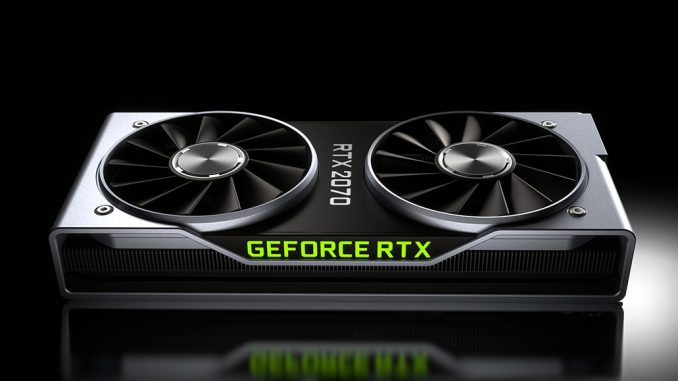
AMD Navi intends to mix up the graphics card market. As an opponent for the new GPUs, Nvidia now allegedly plans Turing graphics cards with faster memory.
AMD Navi: a problem for Nvidia?
AMD is currently about to launch a new generation of graphics cards. It is code-named Navi and is the actual successor of Vega. In terms of performance, however, AMD has chosen a different area. While Vega was preparing to compete against the GTX 1080 Ti (and failed for the most part), the company has other plans with Navi. The new graphics card generation continues to be based on Graphics Core Next, so it doesn’t bring a groundbreaking new architecture. However, the 7nm manufacturing process increases performance. All previous leaks indicate that Navi will be the successor of Polaris and is therefore more likely located in the middle class range. The top model for the time being, which could be called RX 3080 XT, is said to be as fast as the RTX 2070, but with 330 US dollars it is also significantly cheaper. Among these, there should be further models, which aim above all at a good price-performance ratio.
With the Turing generation, the competitor Nvidia has exploited its supremacy. The company outperformed AMD by far with the RTX 20 series, but also dictated new prices. The flagship RTX 2080 Ti still costs over $1,000, while its predecessor GTX 1080 Ti was available for a good 750 bucks. The performance plus, on the other hand, remained moderate. This increase in price was only possible because AMD simply had no capable opponent in the program. Even the Radeon VII, which was launched in February, is only close to the RTX 2080 when it comes to gaming. However, the high-end is not the market that earns the most money, but rather the mainstream sector. And this is where AMD wants to go with Navi. If the leaks so far are correct, Nvidia might have a hard time – or throw more products onto the market.
Nvidia allegedly plans Turing Refresh with faster memory
Interestingly enough, there are already indications of such graphics cards right now. In his last video, YouTuber RedGamingTech talked about a Turing refresh in addition to information about a Ryzen 3000 twelve-core CPU. Sources not mentioned in more detail have provided him with some information. Contrary to what the name suggests, however, no new manufacturing process is to be used. Only the memory clock of the GDDR6 memory is to be increased from currently 14 Gbps to 16 Gbps. Currently, 14 Gbps modules from the manufacturer Micron are often installed.
While at the beginning there were still big problems with the memory, the situation is said to have normalized again. Micron has already clocked its own memory to 20 Gbps, which is more of an extreme example. 16 Gbps memory could therefore be a topic for a Turing Refresh. Already in the past Nvidia has played with faster memory. The company has launched a GTX 1060 with GDDR5X memory on the market as an opponent to the RX 590. But apart from faster memory, there are also other possibilities.
7nm GPU or RTX 2070 Ti?
The currently strong superiority of Nvidia is even reflected in the manufacturing process. While AMD will use 7nm for Navi, Turing uses the much older 12nm technology. But that doesn’t stop Nvidia from building excellent GPUs. Therefore, analysts familiar with the technology have already said some time ago that a 7nm GPU of the company could probably be another quantum leap in terms of performance. So why not just bring a 7nm GPU to market?
Nvidia probably intends to do this after the end of Turing’s lifetime. However, this will not be reached until 2020 at the earliest, while Navi is already starting this summer. As with the RX Vega 56, for which Nvidia has launched a GTX 1070 Ti as an opponent, the company could go a similar way and develop and position an RTX 2070 Ti or an RTX 2060 Ti as opponents. There would be enough space between RTX 2060 and 2070 or RTX 2070 and 2080 anyway. A RTX 2070 Ti could use a partially deactivated TU104 chip of the RTX 2080.
Only time can tell which of these solutions Nvidia will finally choose. Another possibility would be to simply adjust the prices of the current products. However, if there are major differences to the coming Navi GPUs, this might not be enough.

Be the first to comment